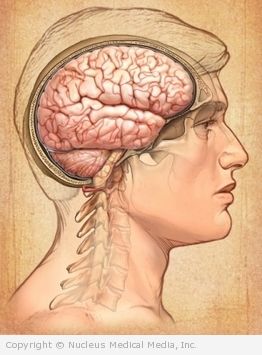Post-traumatic stress disorder – PTSD
Post-traumatic stress disorder – Definition
Post-traumatic stress disorder (PTSD) is an anxiety disorder that develops after a traumatic event. PTSD has also been called “shell shock” or “battle fatigue.”
Post-traumatic stress disorder – Causes
The exact cause of PTSD is unknown. PTSD is triggered by exposure to a traumatic event. Situations in which a person feels intense fear, helplessness, or horror are considered traumatic. PTSD has been reported in people who experienced:
- War
- Rape
- Physical assault
- Natural disaster (eg, earthquake, fire)
- Sexual abuse
- Motor vehicle accidents
- Animal attack
Researchers are studying how problems with synapses in the brain may be linked to PTSD.
Post-traumatic stress disorder – Risk Factors
Not everyone who experiences a traumatic event will develop PTSD. Symptoms of PTSD are more likely to occur if the person has:
- Previous traumatic experiences
- A history of being physically abused
- Poor coping skills
- Lack of social support
- Existing ongoing stress
- A social environment that produces shame, guilt, stigmatization, or self-hatred
- Alcohol abuse
- Family history of mental health problems
Post-traumatic stress disorder – Symptoms
People with PTSD experience symptoms of anxiety. These symptoms fall into three categories:
- Re-experiencing of the event
- Dreams or nightmares
- Flashbacks
- Anxious reactions to reminders of the event
- Hallucinations
- Avoidance
- Avoidance of having close emotional contact with family and friends
- Avoidance of people or places that are reminders of the event
- Loss of memory about the event
- Feelings of detachment, numbness
- Arousal
- Difficulty falling asleep or staying asleep
- Anger and irritability
- Difficulty concentrating
- Being easily startled
People with PTSD may also:
- Abuse alcohol or abuse drugs
- Have physical symptoms, such as pain
- Have depression or anxiety
- Have problems with relationships
Post-traumatic stress disorder – Diagnosis
The doctor will ask you about your symptoms and medical history. This may be done by using a structured interview and/or a questionnaire. You will also likely be given a psychological assessment. PTSD will be diagnosed if you have:
- Symptoms of PTSD, which have lasted for more than one month
- Both emotional distress and disturbed functioning (eg, problems at school, work, or home) due to the symptoms
PTSD is categorized according to when symptoms occur and how long they last. There are three types of PTSD:
- Acute — symptoms last between 1-3 months after the event
- Chronic—symptoms last more than three months after the event
- Delayed onset — symptoms do not appear until at least six months after the event
Post-traumatic stress disorder – Treatment
There are many treatments available to help you. Treatment will not only focus on treating PTSD, but will also focus on any other conditions you have (eg, depression, alcohol abuse, drug abuse).
Cognitive-Behavior Therapy
Cognitive-behavior therapy (CBT) involves changing your thinking patterns to improve symptoms. Your therapist may teach you techniques to manage anxiety, stress, and anger.
Exposure Therapy
In exposure therapy, the therapist brings back the imagery of the event in a safe place. You are gradually guided through a visualization. Re-experiencing the trauma in a controlled environment can help you let go of fear and gain control over anxiety.
Group Therapy
Meeting in a group with other survivors of trauma can be an effective and powerful form of therapy for people with PTSD.
Eye Movement Desensitization and Reprocessing (EMDR)
During this type of therapy, you are asked to talk about the traumatic event, including your memories, feelings, and sensations. While talking, the therapist has you move your eyes side-to-side following her hand movements. EMDR combines techniques from both CBT and exposure therapy. The goal is to allow the mind to process the trauma and to develop more positive beliefs about yourself.
Medication
Medicine may help with anxiety, depression, and insomnia. Usually, antidepressants known as selective serotonin reuptake inhibitors (SSRIs) are prescribed.
The United States Food and Drug Administration (FDA) has approved these medicines to treat PTSD:
- Paroxetine (Paxil)
- Sertraline (Zoloft)
Your doctor may try these or other psychiatric medicines to help control your symptoms.
Post-traumatic stress disorder – Prevention
The events that trigger PTSD cannot be predicted or prevented. But there are some factors that might prevent PTSD from developing after a traumatic event, such as:
- Working with a cognitive-behavioral therapist
- Having a strong network of social support

